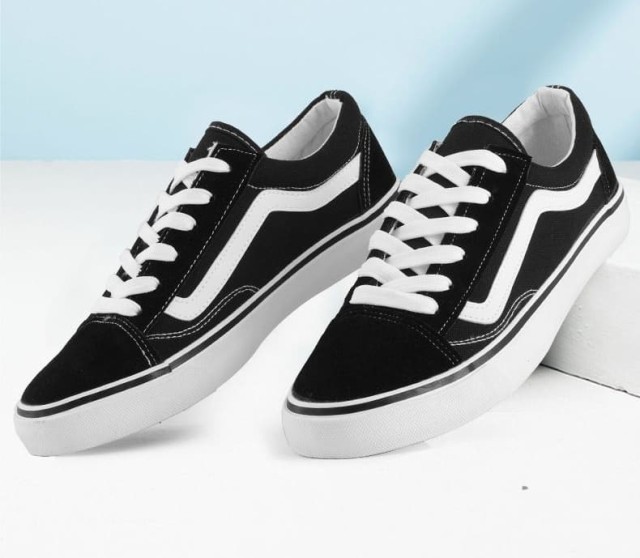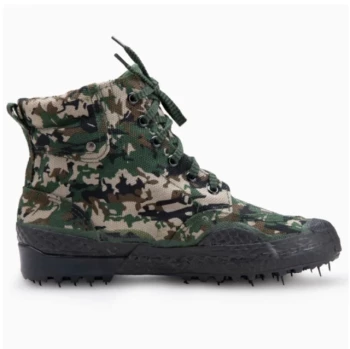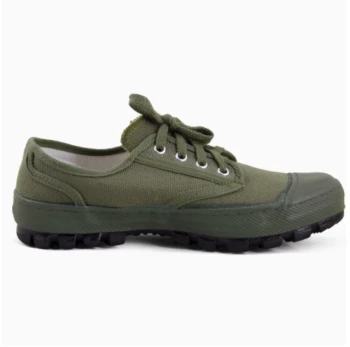For skaters who prioritize board control and flick response, vulcanized construction isn’t just a detail—it’s the foundation of technical mastery. This guide breaks down why pros like Nyjah Huston rely on vulcanized soles for flip tricks and grinds, how they outperform cupsoles in precision maneuvers, and ways to extend their grip lifespan.
The Anatomy of Vulcanized Skate Shoes
Vulcanization transforms rubber into a high-performance material through heat, pressure, and sulfur bonding. Here’s how it works:
- Process: Shoes are baked in autoclaves at 120–180°C and 140–350kPa pressure. Cross-linked polymer chains create soles that balance flexibility and durability.
- Visual Cue: Look for the foxing tape—a raised strip around the shoe’s perimeter—which seals the outsole to the upper during vulcanization.
Why it matters: This process yields soles that mimic barefoot skating sensitivity while resisting wear from repeated board contact.
Why Vulcanized Soles Dominate Boardfeel and Flick Response
Technical skating demands instant feedback between foot and deck. Research shows vulcanized soles excel here because:
- Thinner Profile: 30–40% thinner than cupsoles, enhancing ground contact for precise foot placement.
- Flexibility: The cross-linked rubber bends naturally with foot movements, critical for flicking tricks like kickflips.
- Grip Texture: Vulcanized rubber’s tackiness grips griptape securely, reducing slip during heelflips or shove-its.
Pro tip: New vulcanized shoes break in faster—often within 1–2 sessions—unlike stiff cupsoles requiring weeks of wear.
From Grinds to Bowls: Performance Breakdown for Technical Moves
Flip Tricks
The snap of a vulcanized toe cap generates quicker rotation, while the flexible sole allows smoother catch-and-land motions.
Grinds and Slides
Thin soles lower your center of gravity on rails, improving balance. The foxing tape also absorbs abrasion, delaying wear on stitching.
Transition Skating
In bowls, vulcanized shoes’ sensitivity helps skaters “feel” the ramp’s curve, adjusting pumps instinctively.
Vulcanized vs. Cupsole: A Skater’s Trade-Off Analysis
| Feature | Vulcanized | Cupsole |
|---|---|---|
| Boardfeel | ★★★★★ | ★★★☆☆ |
| Impact Support | ★★☆☆☆ (Requires insoles) | ★★★★★ (Built-in cushioning) |
| Durability | ★★★☆☆ (Wears faster on concrete) | ★★★★☆ (Longer lifespan) |
Key insight: Vulcanized shoes prioritize control, while cupsoles suit high-impact stair sets. Most street skaters accept shorter lifespan for superior flick speed.
Pro Skater Case Studies: Why Nyjah Huston Chooses Vulcanized
Nyjah’s signature moves—like flip-into-grind combos—rely on vulcanized soles’ responsiveness. His setup includes:
- Custom Insoles: Compensates for minimal cushioning during big drops.
- Reinforced Toe Caps: Extends shoe life without sacrificing flexibility.
Maintaining Your Vulcanized Shoes for Optimal Grip Lifespan
- Rotate Pairs: Alternating shoes reduces midsole compression.
- Clean Grip Residue: Use a brush to remove griptape dust that degrades rubber.
- Patch Worn Areas: Shoe glue on frayed foxing tape can add 2–3 weeks of use.
Final thought: Like a skateboard’s perfect concave, vulcanized shoes are tools engineered for skaters who value nuance over brute strength.
Ready to experience precision-engineered vulcanized performance? 3515 partners with brands and distributors to deliver high-quality skate footwear—contact us to explore bulk solutions tailored to your technical needs.
Products You Might Be Looking For:
Explore high-performance vulcanized skate shoes
Related Products
- Durable Rubber Sole Outdoor Shoes Wholesale & Custom Manufacturing
- Durable Spiked Camouflage Boots Wholesale & Factory Production
- Durable Rubber-Soled Utility Shoes for Wholesale & Custom Brand Manufacturing
- Wholesale Durable Camo Canvas Shoes with High-Traction Rubber Soles
- Durable Canvas Work Shoes with Rubber Lug Sole | Wholesale Manufacturer
Related Articles
- How Vulcanized Rubber Boots Outperform Standard Footwear: Science and Practical Benefits
- Why Vulcanized Soles Dominate Technical Skateboarding: A Science and Performance Breakdown
- Optimizing Vamp Production for Vulcanized Shoes: Materials, Techniques, and Quality Assurance
- How Vulcanized Rubber Engineering Creates Unbeatable Outdoor Boots
- Why Vulcanized Shoes Dominate Durability and Comfort: A Technical and Practical Guide




















